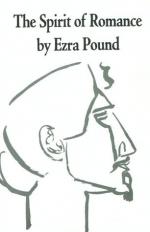|
This section contains 2,401 words (approx. 9 pages at 300 words per page) |

|
Hugh Selwyn Mauberley, Pound's ironic portrait of the artist, stands at the end of the Imagist Decade, from 1910 to 1920, when literature in English became recognizably Modern…. [Lines] from the second section of the poem imply that the modern revolution in literary style came from two main impulses—focus on the image, and defiance of the age, an age which was preoccupied in that second decade of the century with the First World War. Modern literature, it seems fair to say, began as a contradictory art, modern in form, anti-modern in content, and so it was to remain throughout its period of greatness. (p. 15)
Ezra Pound in his early critical writings took [the following] view of the equivalence of art and science:
The arts, literature, poesy, are a science, just as chemistry is a science. Their subject is man, mankind, and the individual….
Pound maintained that the material of...
|
This section contains 2,401 words (approx. 9 pages at 300 words per page) |

|


